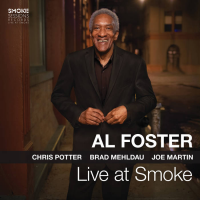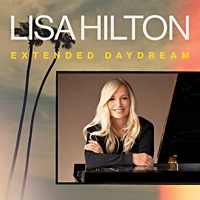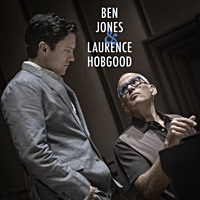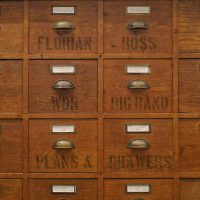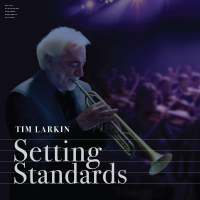Bob Mould – Here We Go CrazyWhen he calls, Bob Mould is finishing work on his 15th solo album, Here We Go Crazy. A distillation of the unfailing melodic skill, the emotional lucidity and dynamic fluency he’s developed over more than four decades, it’s also a typically bold realignment of his sonic paradigm. Its turbulent vignettes are scored by Mould’s familiar bruised tunefulness, but the sound is pared back to its fundaments, 11 songs blistering past in just over 30 minutes. “I’ve stripped things back to what excited me as a young guitarist,” he explains. “The energy, the electricity.”Part of the inspiration for this more primal aesthetic is the heavy itinerary of touring he’s lately undertaken, several years spent circling the globe, either in the company of bandmates Jon Wurster (drums) and Jason Narducy (bass) or just by himself. “I was really throwing myself in the songbook and feeling where the audience is at,” he says. “And they were really responding to this very simple, just-me-and-a-guitar setup. And I thought, maybe I shouldn’t be overcomplicating things, ‘word’-ing or ‘craft’-ing it up. Just grab for the simple bits of life we still have control over: our emotions, our relationships.”After shows, Mould would hang out signing merch and talking to fans. “Sometimes people bring a lot of their lifetime emotional content to me,” he says, “like they’ve compressed all this coal into a tiny little diamond. Sometimes I’m surprised at the weight of it, the heaviness. I’m like, ‘I’m here for you. I’m listening.’ I’m shocked and grateful they share so readily with me. I don’t know what I did to earn that trust.”Mould has earned that trust with every record he’s made, channelling his own “lifetime emotional content” for songs of wisdom, honesty and volcanic intensity. His first band, Hüsker Dü, bared his angst over furious noise and turbulent melody, an indelible influence on generations that followed. But by the time Nirvana infiltrated the mainstream, Bob Mould had already moved on, having sequestered himself in a farmhouse to lick his wounds and learn new ways to sing his songs. His solo debut, 1989’s folk-rock masterpiece Workbook, was a record of depth and sophistication. Then he pulled another sharp turn, his power-trio Sugar alloying his most melodic songs with his fiercest noise, yielding his most commercially successful work yet. Over the solo career that followed Sugar’s own mid-90s flameout, he’s displayed a maturing gift for songwriting, transcending the ‘alternative’ tag and recognised alongside key influences like Pete Townshend and Pete Shelley. He’s adrenalized classic forms, alchemised angst into something addictive and powerful. “I’m just trying to figure myself out,” he says. “After 64 years of life – 55 spent writing songs – it’s what I do.” The concepts that shaped the songs of subsequent albums reflect those years. The ruminative Beauty & Ruin (2014) and Patch The Sky (2016) were written in the wake of losing his parents and other loved ones. 2019’s Sunshine Rock was a homage to the early Capitol singles of the Beatles and the Beach Boys, constant companions through his turbulent childhood. The terse, political Blue Hearts (2020) was written and recorded amid the dying days of the first Trump administration.Here We Go Crazy, meanwhile, arrives at another moment of uncertainty, a time of disruption and fear. Mould sees the songs unfolding like the three acts of a play, each act exploring distinct but related themes. The first handful of songs concern “control versus chaos”, Mould explains. The opening title track contrasts images of nature – deserts, mountains, fault-lines – with the tumult of human life. Inspired by a riff that Mould says “sounded like a fistfight”, ‘Neanderthal’ is “a snapshot from inside my head as a young kid: growing up in a violent household, everything being unsettled, feeling that fight-or-flight response at all times,” while ‘Breathing Room’ is “about feeling isolated, cramped-up, and literally needing that breathing space”. The furious, dynamic ‘Fur Mink Augurs’ signals the second act, where the darkness descends. The song channels claustrophobia, and “the cold, crazy, late-winter feeling I grew up with in the Adirondacks and in Minnesota. When the cabin fever really sets in deep – when the permafrost is set and it never gets warm – you become frayed, and things can really unravel, quickly.” ‘Lost Or Stolen’ chronicles lives undone by “people losing themselves in their phones,” Mould explains. From this focus, he pulls back and digs into “ideas about depression, addiction, self-medication and collapse… The words just fell out of me.” This anguished middle-passage of the album concludes with the cathartic ‘Sharp Little Pieces’, exploring “the end of innocence, the idea of a young child’s trust being violated. For those of us who lost trust as children, it disappears in a flash, and we spend years struggling to regain that innocence. And maybe it never comes back.”The song ends bluntly (Mould says the album’s “lack of sophisticated ornamentation is key – I was trying to stay out of the way of the songs, to strip away all the things I used to think were important, all those extra colours and complexities. I didn’t want to get deep into decorating the tree. I wanted to keep it simple, to use the simplest words”), raising the curtain on the closing act. The theme here is lifting oneself out of the darkness; ‘You Need To Shine’ is a song about “looking for the bright sides, the good parts of life, despite everything that’s happened”, Mould says, a sentiment borne out by the song’s spirited holler that “all that madness doesn’t matter anymore”. ‘Thread So Thin’ is “about trying to protect the one you love, and trying to feel protected”, Mould explains, while the closing ‘Your Side’ is a powerful love song from the edge of the darkness, Mould howling “If the world is going down in flames, I want to be by your side”. “We're heading into a great unknown here,” Mould says, of the wider geopolitical and climate anxieties that inspired these songs. The message here is, simply, focus on that which can save you and deliver you from this moment. “This album talks a lot about uncertainty, helplessness, being on edge,” Mould adds. “How much can we control? How much chaos can we handle? In the end, the answer, the remedy, is placing your trust in unconditional love.”Mould knows Here We Go Crazy is an album freighted with darkness; “There’s soothing melodies, and there’s lyrical discomfort,” he deadpans. “It’s manic, frantic, complex.” But no one ever came to Bob Mould for good news, for the easy answers. Pop music runs through his veins, as surely as the electricity that drives his chiming hooks into the realms of distortion, but he’s here to give you the truth, his truth. To give you songs that ring true when howled against a tornado of guitar, that compress all that “lifetime emotional content” into some kind of sonic diamond. There’s eleven of those precious gems here, sculpted to make the heaviness easier to bear, somehow. Treasure them.
show less

